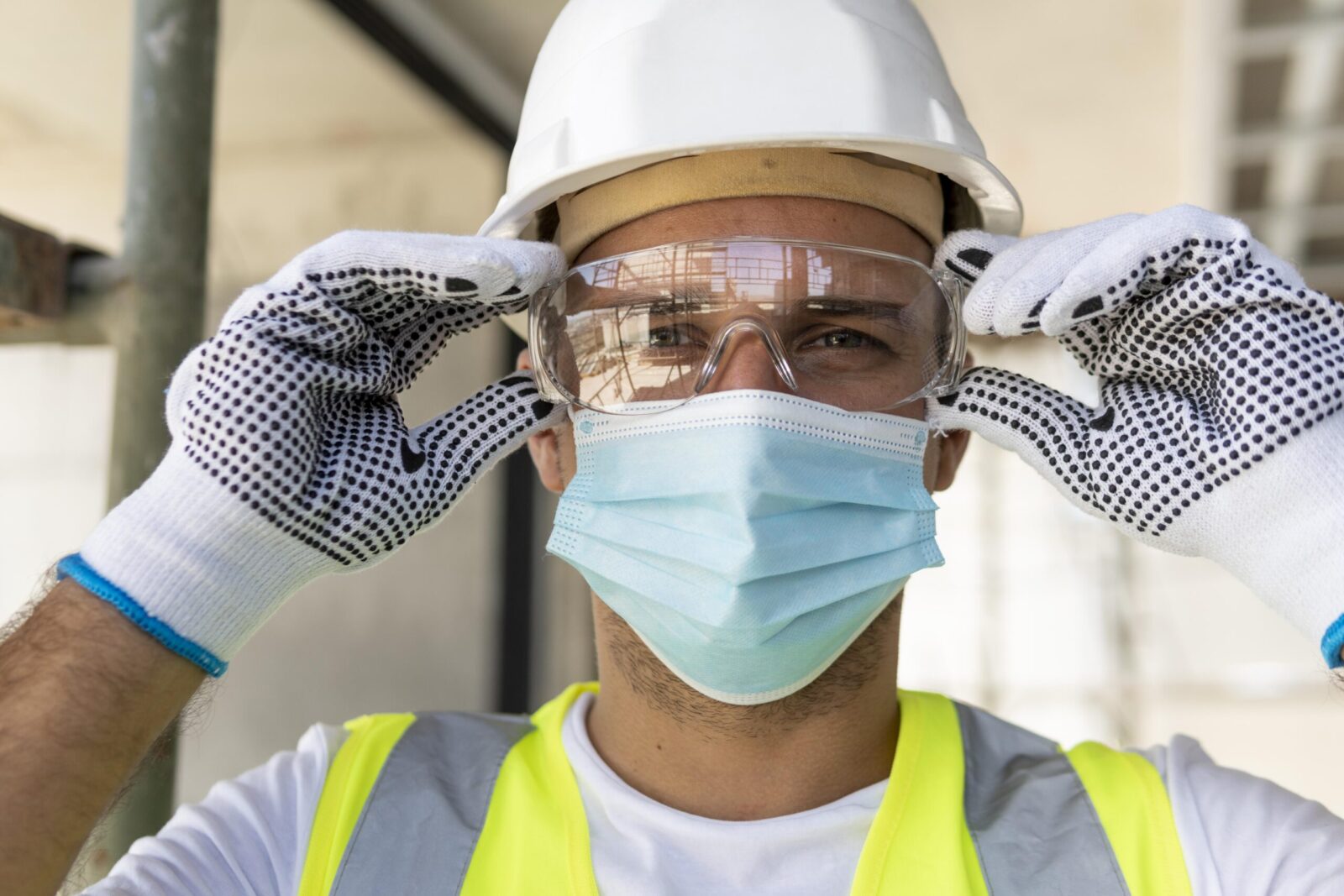
Essential PPE in the Food Industry: What You Need to Know
Overwhelmed by PPE options for food safety? Master your PPE selection for food workers safety with these practical tips.

Get 20€ off on your first order!
Looking for the perfect safety helmet for your construction work? This guide makes it simple. We’ll help you identify the right helmet by covering key features like materials, comfort, and compliance with safety standards. Plus, you’ll discover practical tips for making the best choice based on your job needs.
By the end, you’ll have all the information you need to confidently choose the ideal helmet—and we’ll even guide you on the next steps to enhance your safety with additional protective gear. Let’s get started!
For a broader look into head protection, visit our main article on Hard Hats and Safety Helmets: Selecting The Right Headgear.
Choosing the right construction helmet requires careful consideration of several critical features to ensure both safety and functionality. For instance, workers in demanding environments might prioritize helmets with enhanced impact resistance.
Safety helmets are typically made from polycarbonate, ABS plastic, or fiberglass, each offering varying levels of durability and resistance to impact. For areas requiring enhanced protection, helmets made of fiberglass or polycarbonate are ideal due to their superior strength and reliability.
A well-fitted helmet enhances comfort and ensures maximum efficiency during work. Look for:
Ensure the helmet complies with relevant standards, such as those defined under European regulations, which specify requirements for industrial safety helmets.
Check the certification label or manufacturer’s specifications for compliance. Learn more about EN Standards from this guide in Wikipedia.
Modern safety helmets come with features like:
For a detailed look into additional features, see Choosing The Best Headlamp For Work.

Construction jobs vary, and so do their safety requirements. Below are common types of helmets:
For more on choosing electrical helmets, check out Safety Helmet vs Hard Hat.
Follow these steps for an effective selection process:
To ensure long-term protection:
Regular replacement of helmets every 3-5 years, as per manufacturer guidelines, helps maintain their protective effectiveness. Always check the manufacturing date to ensure you’re purchasing a helmet with maximum potential lifespan.
Browse a wide range of high-quality hard hats and safety helmets to find the perfect fit for your needs. Pair your purchase with accessories and related PPE to ensure comprehensive safety.
While safety helmets are vital, pairing them with additional PPE can address other site-specific risks, such as hand protection with gloves or enhanced visibility with reflective clothing:
We hope this guide has provided valuable insights into selecting the best safety helmet for construction, from understanding key features to meeting industry standards. Whether you’re safeguarding yourself against falling objects or ensuring compliance with workplace regulations, we’re here to support your safety journey.
Explore our full range of Safety Helmets on Droppe, featuring trusted brands known for quality and reliability.
For further insights, check out our guide to Hard Hats And Safety Helmets and related articles.
Need help or advice to find the perfect helmet? Reach out anytime—we’re here to ensure your confidence and protection with every choice.
– The Droppe Team
Safety helmets typically last 3-5 years, but replace them immediately after significant impact or visible damage.
Avoid using stickers or paint, as they may hide damage or compromise the helmet’s material integrity.
Most helmets are water-resistant, but verify with the manufacturer if you work in consistently wet conditions.
Safety helmets often have additional features like chin straps, better impact protection, and enhanced comfort compared to traditional hard hats.
Yes, helmets designed for working at heights usually have chin straps to prevent them from falling off during movement.
Thank you! You've signed up for our newsletter.



















Overwhelmed by PPE options for food safety? Master your PPE selection for food workers safety with these practical tips.

Struggling to maintain clear vision in demanding environments? This guide is here to help. By the end, you’ll know exactly...

Electricians across Europe face unique challenges that require reliable safety glasses to ensure both protection and efficiency. Whether safeguarding against...

Overwhelmed by PPE options for food safety? Master your PPE selection for food workers safety with these practical tips.

Struggling to maintain clear vision in demanding environments? This guide is here to help. By the end, you’ll know exactly...

Electricians across Europe face unique challenges that require reliable safety glasses to ensure both protection and efficiency. Whether safeguarding against...
Get 20€ off on your first order!
Save 30% by buying directly from brands, and get an extra 10€ off orders over €100
Save 30% by buying directly form brands, and get an extra 10€ off orders over €100